
Success in maintaining a freshwater system takes applied know-how in the way of setup, stocking and ongoing maintenance. A discussion of all elements of aquarium gear could easily fill a few books, but here we’ll focus on four areas: substrates, fish medications, heaters and cleaning tools.
Call them gravel or sand, substrates are both useful and beautiful additions to aquariums. While a few settings call for a "bottomless” arrangement — commercial setups where gravel would be in the way, hatcheries where constant waste removal negates their use — most tanks benefit functionally and aesthetically through incorporating one or more type of substrate. Here is a quick run-down of pluses and applications.
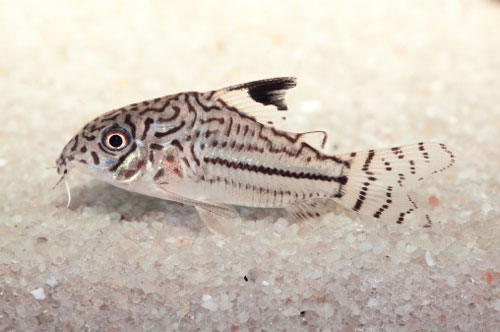
1) Looks. Colored, natural and even smoothed glass is better than a bare-bottom look. For appearance’s sake, having substrate on the bottom of your tank beats having nothing, hands-down. When you’re choosing your substrate, keep in mind these questions: What type of setup is it? What are you trying to achieve? What are you trying to accentuate? What grade/size will look best?
Color and contrast are important. Many fish, and some invertebrates, literally pale when kept in tanks with a bottom that’s too light-colored, while darker colors bring out their markings and hues.
What about the outside setting where the tank is situated? Do you want the tank to stand out, or blend in with its location? When in doubt, a neutral, brown-tan colored substrate is a good bet.
2) Functions. Substrates do many good things for a tank. They eliminate the light reflection from the bottom that would occur if nothing was there. This can be a very big deal; with no substrate, the light reflection can add stress to the tank inhabitants.
Gravel and sands also fulfill an important function in providing surface area for biological filtration. Uneaten food and waste (mulm) accumulate there, and these serve a similar purpose in making homes for beneficial bacteria. Some mulm is good, but you don’t want too much of this otherwise-desirable material building up. (See the last section on "Cleaning Tools” regarding gravel vacuums for more information).
Noncoated, natural gravels also can serve as a ready source of alkalinity. Their carbonate, alkaline earth (calcium, magnesium) and other components dissolve, going into solution, in part due to the lowered pH (reductive) environment in the substrate itself. Our captive systems (aquariums, ponds) "go acidic” over time due to overcrowding, overfeeding and a lack of new alkalinity added and/or flushing (like freshwater/rain in the wild diluting). The use of natural substrates "fights” this incremental decrease in pH by dissolving, particularly in the deeper areas of the gravel.
3) Habitat. Think about your home or office. Do you have bare floors? Likely not: you probably have rugs or carpet. Much of the livestock we keep requires important "bottom time,” which means time to root about on or even in the substrate for food or shelter. Many loaches, killifishes and more delve into the bottom, and they need soft media there.
Substrate is also good for the anchorage of bottom plants. Though there are entirely free-floating species like the various duck weeds (such as Riccia and Cryptocoryne ciliata), rooted plants need suitable grade, depth and chemical makeup of substrate to do well.
Having a few inches of substrate goes a long way to keeping your system cleaner, more stable and optimized for your livestock. Keep up with your regular vacuuming as part of frequent partial water changing.
The issue of using medications can be a contentious one. Medication has a time and place, but if people misread symptoms and jump to unconfirmed conclusions, they can treat for the wrong cause or what are actually environmental issues. If that occurs, the results can be deadly for the fish.
I’d like to make a few general statements here regarding disease or rather, its antithesis, health.
The three sets of factors that determine livestock health are:
1) Its initial state, including genetic and developmental.
2) The suitability of the environment, as well as a huge collection of criteria incorporating chemistry, physical makeup of the water, stability, foods/feeding, social aspects such as sex ratio, etc.
3) The presence and degree of disease-causing (pathogenicity) activity of infectious and parasitic agents.
All three sets of factors are dependent and interactive with each other, and often displayed as such in three partially overlapping circles in a Venn diagram (see Page 58). The small "intersecting area” of all three exemplifies this interaction, and points out the need to take into consideration all three sets in discerning what is going on when confronting an apparent disease situation.
The vast majority of livestock losses are due to deficiencies/challenges of poor environment. Ask yourself: What is your water quality? Have you kept up with regular maintenance? Is there something you can do to boost your livestock’s immunity/response? Perhaps simply lacing foods with vitamins, or highly unsaturated fatty acids (HUFAs) will save them. When and where in doubt, often successive partial water changes will work wonders. For many pathogenic (biological agent) diseases, manipulating temperature alone is the best treatment.
As stated, there are occasions that call for direct chemical treatment; mainly external protozoan (for white-spot disease, velvet disease) and internal (for worms of various sorts, some protozoan). These need to be diagnosed accurately, and utilized to the letter per the medication-supplier’s instructions.
Various dyes, metal solutions, even biocides like formalin/formaldehyde, antimicrobials and anthelminthics/vermifuges do have their place in our pet-fish arsenal of treatments. But you must know when it is appropriate to apply them, and then to do so carefully.
All living organisms have a range of temperatures they’ll tolerate, and tolerance to rapid increase/decrease in thermal regimes. Water has a very high specific heat, so it changes temperature slowly, but all tanks — even coolwater tanks — need a working heater to prevent the temperature from fluctuating too much or too fast.
Nearly all aquarists use either a hang-on or submersible, glass-tubed electrical heater, the former being more popular due to its lower cost. The inexpensive hang-ons are fine for small volumes of a few to tens of gallons. I think submersibles are preferable, because they are easier to hide and place farther down, deeper in tanks (or sumps) and are far less subject to breakage from accidental air exposure and bumping.
There are small wattage, enclosed undertank/bowl heaters (useful for betta systems) and expensive cable heaters, mostly for planted tanks (to wind about within the gravel bed); and some enclosed in-line heaters and modules for enclosing heaters in plumbed, recirculated systems.
With heaters, it pays to not have too much or too little. You want just about the right amount of heater or heaters for your tanks. Too little wattage, and they’re running all the time; too much and if the setting gets knocked about, you may have a too-hot situation in short order.
How many heater watts is about right? For smaller systems of a few to tens of gallons, shoot for 5 or 6 watts per gallon. For larger systems, try for 3 or 4 watts per gallon. When in doubt or where hundreds of gallons are involved, utilize more than one heater. Divide the wattage to reduce the chance of all failing, and spread them distal to each other for more even thermal control.
Use thought when placing the heater. Submersibles can be hidden, even laid-down horizontally on the bottom (but not under gravel). They require some water/space and circulation about them to be effective. Consider using logs or tubes to hide them, or buy commercial décor. Such placement prevents damage from rambunctious inhabitants.
Thermometers vary widely in their accuracy (ability to measure real temperature) and precision (ability to measure consistently). If you have a large system, it pays to have two thermometers; one placed down low near the bottom and the other near the surface. If you use stick-on thermometers placed outside the tank, be aware that very large glass tanks and more thermally insulated acrylic tanks may give you false readings if there’s a good deal of temperature difference inside the tank itself and outside in the air.
Thank goodness for improved products and technology as the years have rolled along. People go on and on about better lighting and filtration, but clean-up gear has similarly evolved. Let’s mention three principle, important pieces of an aquarium maintenance kit: New water treatment filtration, gravel vacuums and nets.
There is less good quality water in the world, and a greater need to be careful about it. I’m talking about municipally added sanitizer (i.e., chloramine) and a lot more. You may be one of the fortunate whose tap water is just fine after treating with a dechlorinator, but most people should at the very least treat and store new water for several days ahead of use. This gives chemical reactions time to occur, and the time needed can vary should the doses of chloramine vary, which can happen.
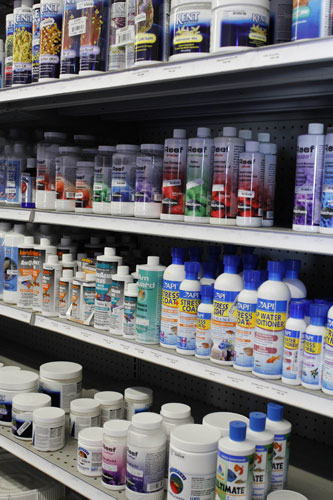
For aquarists with livestock that need softer, more acidic water, reverse osmosis or contractor filtration will remove almost all undesirable liquids, solids and gasses. If you have concern regarding your source water, ask your supplier for their ongoing analysis and an explanation of what all those numbers mean. Should your main water prove "iffy,” you may want to get and use a reverse-osmosis device (and storage) for your potable uses as well as your aquarium.
There are do-it-yourself and commercial preparations you can mix or buy to replace desired minerals and salts, per your livestock’s needs and ranges. Some examples are peat moss extracts and more for further pH depression, and Rift Lake salt addition products.
Regular, frequent (usually weekly) water change-outs and replacement with new water are a standard element of good freshwater aquarium management. There is no simpler, easier and surer way of maintaining decent water quality than by serial dilutions of waste and heavy water. And the best piece of gear to accomplish this water changing feat? A handy-dandy gravel vacuum! Years back we had to make our own "vacs” out of tubing, an inverted funnel or plastic bottle or such with the bottom cut off. Now, a huge assortment of transparent, tubed vacuums are available in various sizes, some with a squared edge for getting into corners, others sporting a bulldozer like tip for turfing through the gravel. Some brands come with fill/drain fittings for hooking up to a sink to power drain and refill your system. Whichever you choose, get and stay in the habit of weekly siphoning out 20 to 25 percent of your water, while vacuuming half the bottom (leave the other half until next time, to preserve biological filtration capacity). Your livestock will thank you.
Lastly in our discussion, though certainly not the end of possible gear, are nets. You simply cannot have too many nets. Good quality, soft netting (to disallow scraping of soft bodies) of various sizes and grades are the tools of the trade and hobby. People who know what they’re doing never use just one net to capture tank inhabitants. They put two nets in action — one to direct the intended prey, the other to scoop it out — rather than chasing animals around and around with one net. Larger grade netting is desirable for bigger animals, especially ones like armored catfishes (think Loricariids and Callichthyids), to prevent entanglement of barbed and spiky body parts.
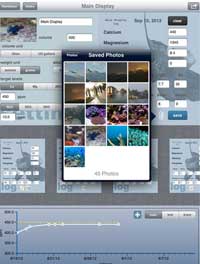 Reefdoser Pro for iPad Ships
Reefdoser Pro for iPad Ships
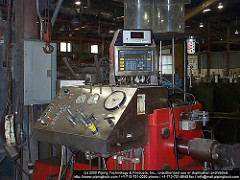 Would You Like The Supreme Fishing Experience? Heres The Reason Why It Is Essential To Carry The Mo
If what youre seeking out is considerably more fish thr
Would You Like The Supreme Fishing Experience? Heres The Reason Why It Is Essential To Carry The Mo
If what youre seeking out is considerably more fish thr
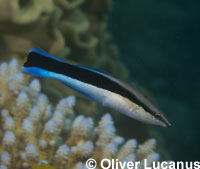 Cleaner Wrasse
Cleaner Wrasse
 Useful Idea For Stronger Nutrition And Wellness
It truly does show when you take time to create a proper no
Useful Idea For Stronger Nutrition And Wellness
It truly does show when you take time to create a proper no
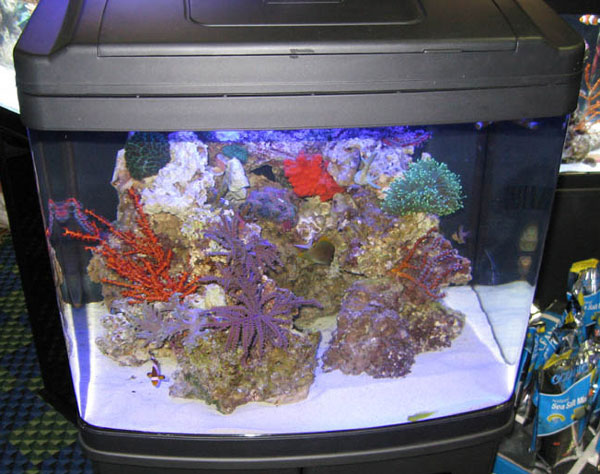 Marine Nano Tank Problems
Marine Nano Tank Problems
Copyright © 2005-2016 Pet Information All Rights Reserved
Contact us: www162date@outlook.com